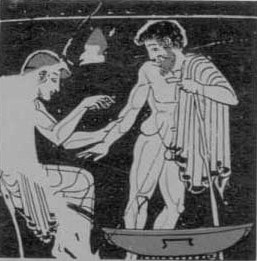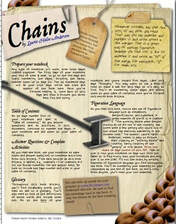Doctors commonly used bloodletting to cure someone of almost any illness from acne to hearing loss, or to keep them from getting an illness. Most often, doctors would cut a vein in the patient's arm or neck to drain their blood. They also used leeches (a type of worm) that would be applied to the patient's skin to suck out the blood. Regardless of the method, the blood was drained until the patient started to faint. George Washington probably died because of bloodletting. He got a sore throat after riding his horse in the rain and his doctors bled him of 80+ ounces of blood (the average person has about 160-180 ounces). He died a few days later. It is widely believed the bloodletting, at the very least, hastened his death (made it come quicker), doing more harm than good. As scientists learned more and more about the human body, they learned that bloodletting wasn't helpful except in a very few cases. They also learned that bloodletting was often exactly the wrong thing to do, but it took them much longer to learn the right thing to do. “Bloodletting.” Wikipedia, Wikimedia Foundation, 11 Nov. 2018, en.wikipedia.org/wiki/Bloodletting. Cohen, Jennie. “A Brief History of Bloodletting.” History.com, A&E Television Networks, 30 May 2012, www.history.com/news/a-brief-history-of-bloodletting. Markel, Dr. Howard. “Dec. 14, 1799: The Excruciating Final Hours of President George Washington.” PBS, Public Broadcasting Service, 14 Dec. 2014, www.pbs.org/newshour/health/dec-14-1799-excruciating-final-hours-president-george-washington. Margolies, John. “Barber Pole, Dodge City, Kansas .” Wikimedia Commons, Library of Congress, 14 July 2018, commons.wikimedia.org/wiki/File:Barber_pole,_Dodge_City,_Kansas_LCCN2017706837.tif. NULAND, SHERWIN B. “Passions and Tempers: A History of the Humours - Noga Arikha - Books - Review.” The New York Times, The New York Times Company, 8 July 2007, www.nytimes.com/2007/07/08/books/review/Nuland.html?ex=1341547200&en=28b87289415e5d35&ei=5088. PBS NewsHour. “Bloodletting and Blisters: Solving the Medical Mystery of George Washington's Death.” PBS, NewsHour Productions LLC. , 16 Dec. 2014, www.pbs.org/newshour/show/bloodletting-blisters-solving-medical-mystery-george-washingtons-death.
Comments are closed.
|
Author
I often struggle to find websites with thorough explanations in simple language to help kids understand historical events or scientific concepts, so I decided to create some of my own! -Cookie Davis
Archives
March 2024
|



 RSS Feed
RSS Feed